PayPay Corporation (hereinafter “PayPay”) is pleased to announce that the number of registered users*1 of its cashless payment service “PayPay” has reached 60 million (as of October 4, 2023) merely five years since the app was launched, which translates to almost half the population of Japan*2 and two-thirds of Japan’s smartphone users.*3
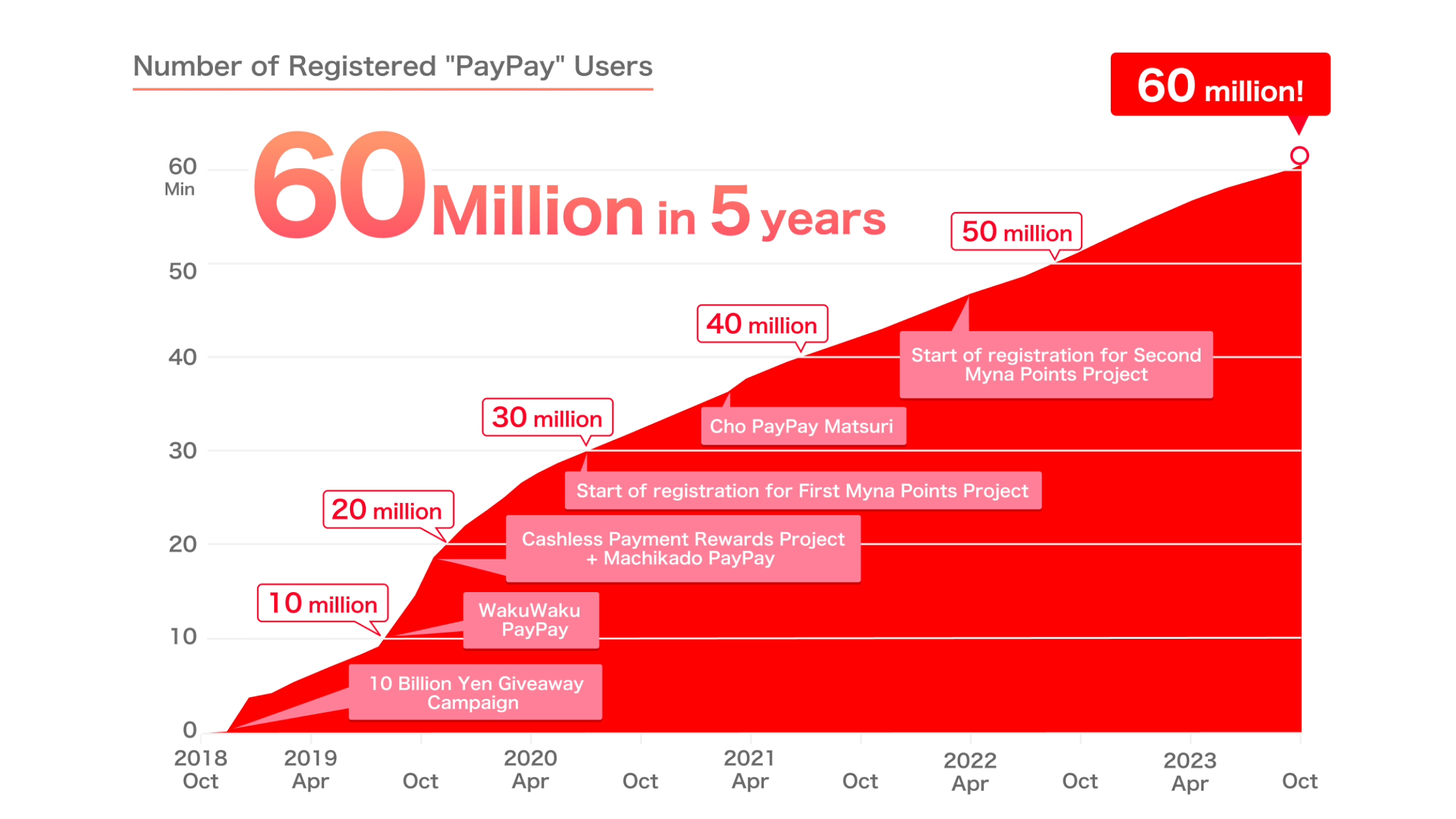
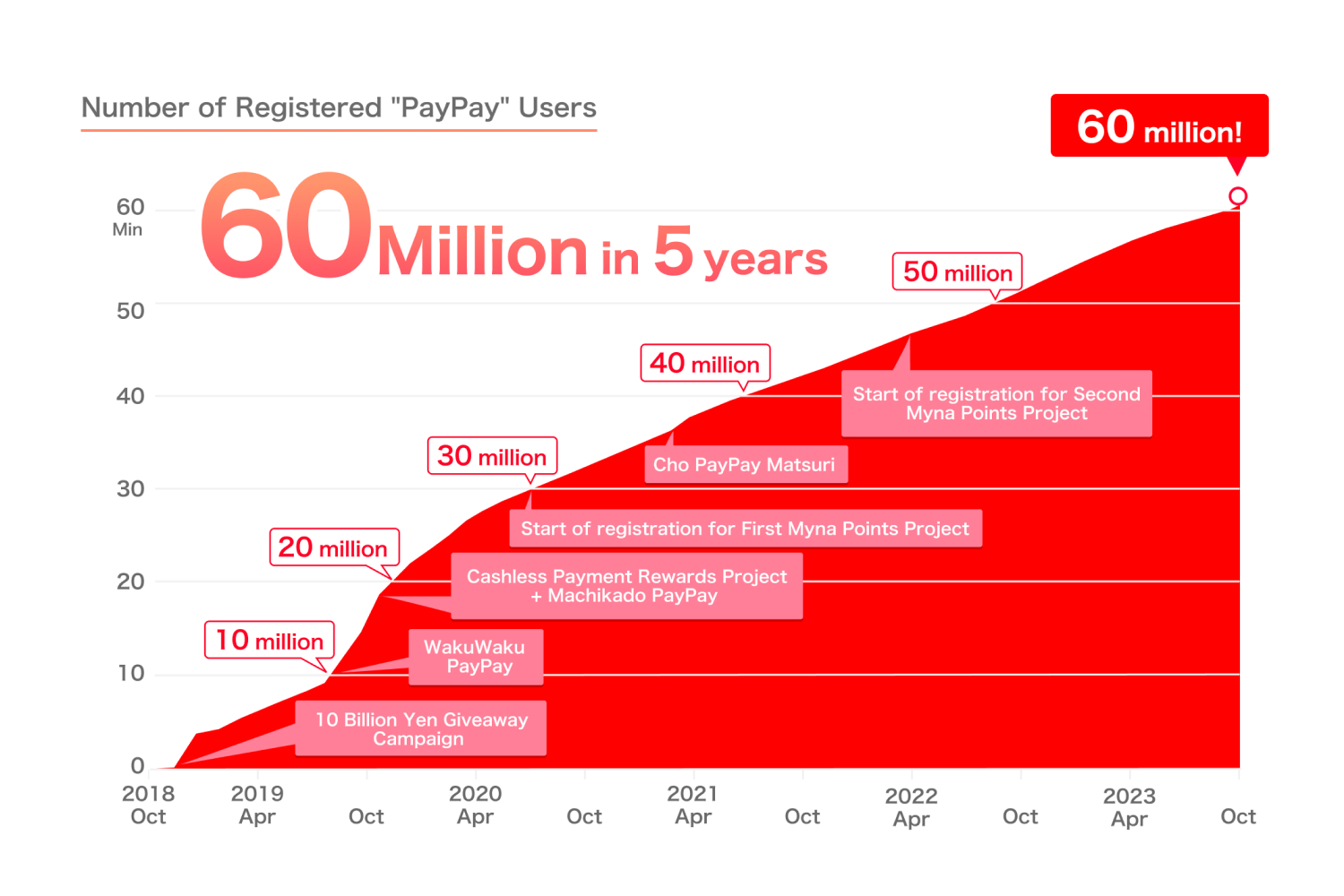
Number of registered “PayPay” users
*1. Number of users who have registered a PayPay account.
*2. Calculated by PayPay based on “Population Projections – August 2023” by the Statistics Bureau of the Ministry of Internal Affairs and Communications.
*3. Calculated by PayPay based on “Population Projections – December 2022 Report” published by the Statics Bureau of Japan and “1. Information Communication Devices Ownership” in “2022 Telecommunications Usage Trends Survey” published by the Ministry of Internal Affairs and Communications.
In recent years, code payments (QR code and barcode) in the domestic cashless market have shown remarkable growth. The number of overall cashless payments in 2022 was approximately 30 billion,*4 of which code payments accounted for 7 billion and e-money 5.9 billion, surpassing the number of e-money transactions for the first time and showing that code payments have become ubiquitous. Among these, “PayPay” has been used 4.7 billion times, or once every six times for all cashless payments, evincing its growth as a payment social infrastructure.
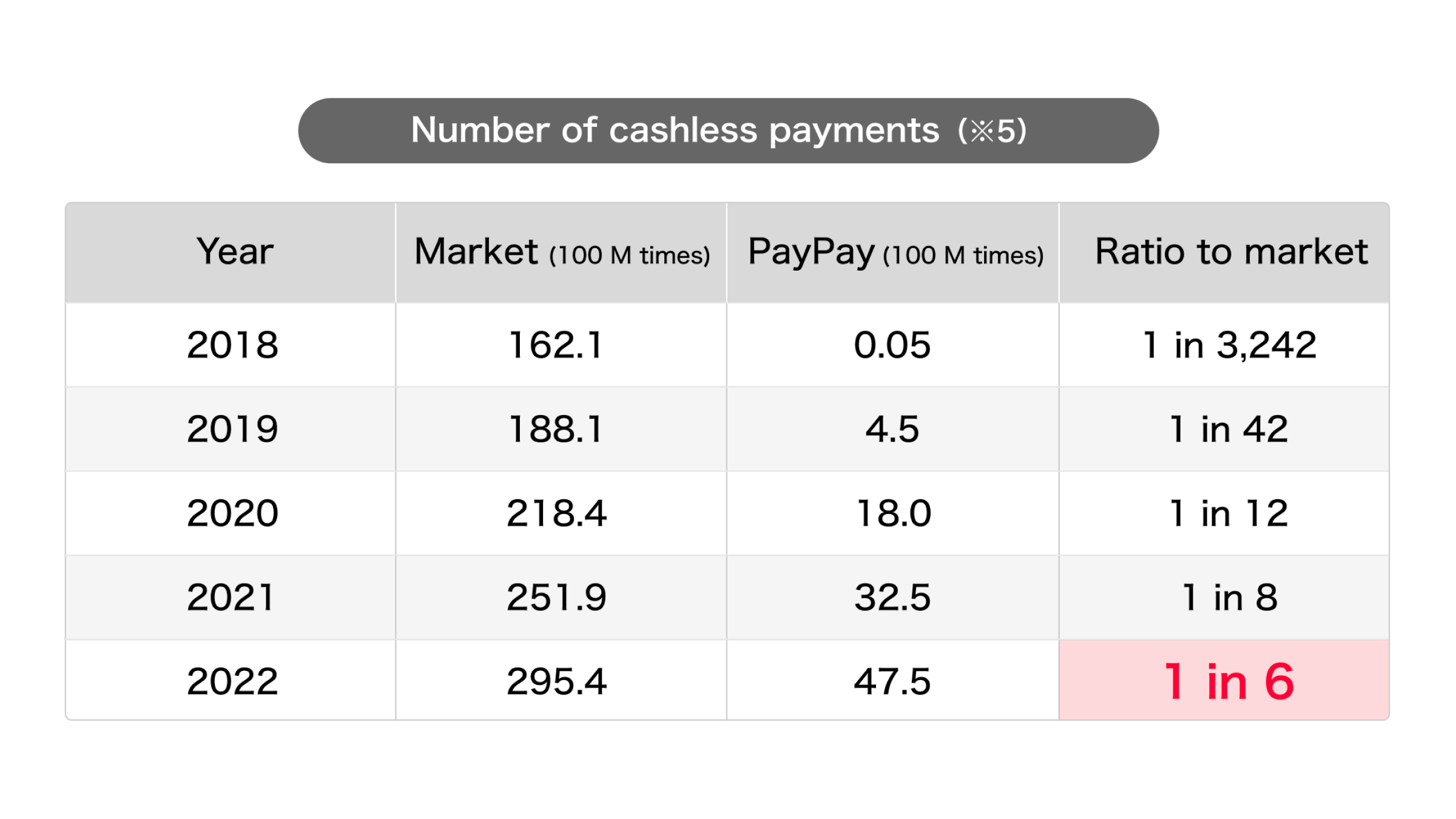
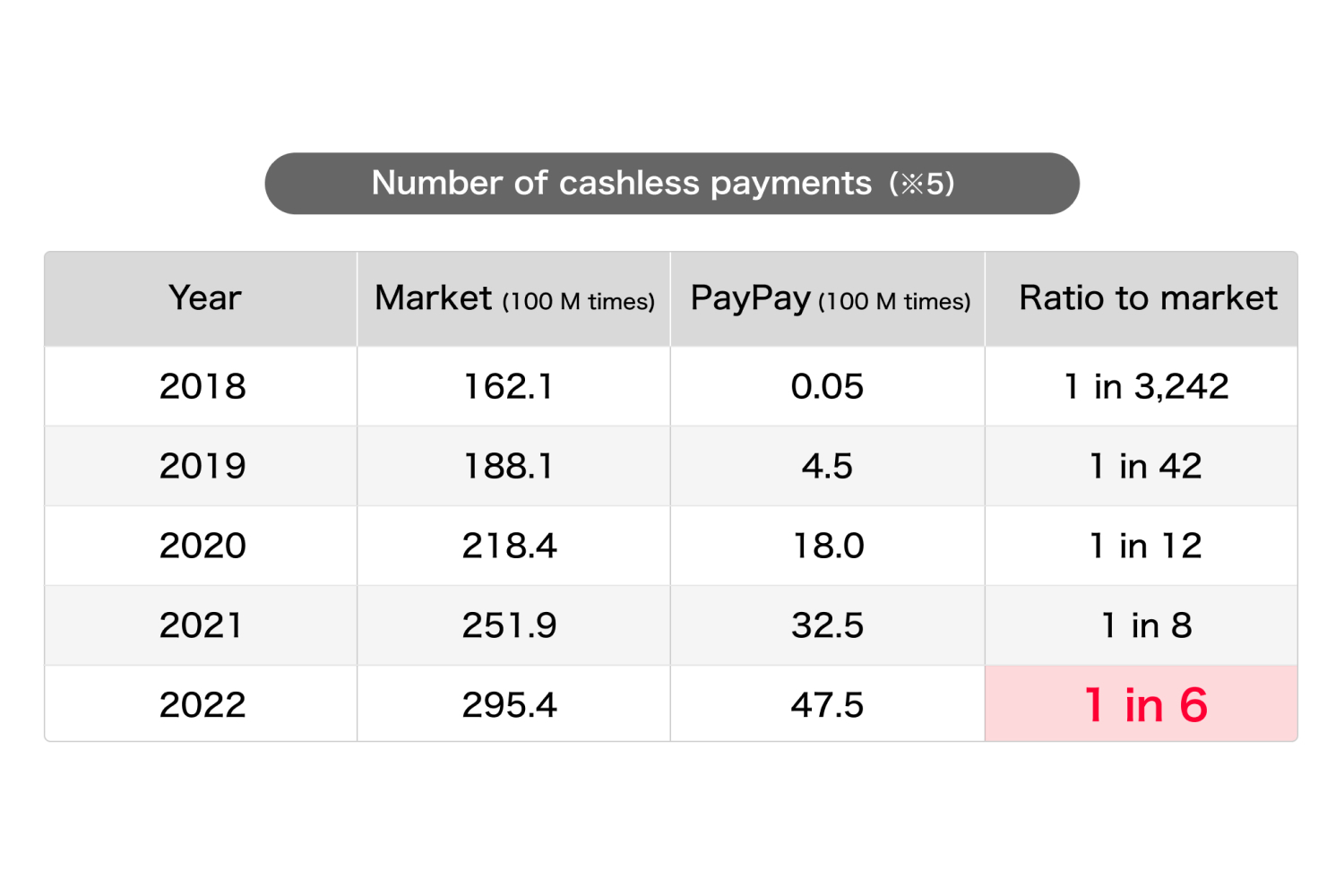
*4. PayPay researched and combined the frequency of code payments by referencing “Monthly Survey: Credit Card Trends,” published by Japan Consumer Credit Association on May 31, 2023, and by looking at the number of debit card and e-money transactions in data provided by the Bank of Japan in June 30, 2023, as well as “Stats – Code Payments” published by PAYMENTS JAPAN on July 7, 2023.
*5. From data published by the Ministry of Economy, Trade and Industry (March 20, 2023, “Summary of the Study Group on the Future of Cashless Payments“). The number of cashless payments from 2018 to 2021 were all combined, and for 2022, the calculation method in *4 was used. The number of “PayPay” payments in 2018 is the total from October to December. All numbers were rounded off.
“PayPay” was a late starter among code payment services, but by launching a large-scale campaign and rapidly expanding the locations where it is available—from major nationwide chains to small and medium-sized stores—it has succeeded in attracting 20 million registered users in only one year since the service went live. In 2019, the share of “PayPay” in the domestic code payment amount was approximately 62%, and 55% in terms of number of payments, achieving more than half of the market share*6 in its first year. In addition, PayPay has continued to evolve its product by implementing weekly app updates with a focus on user-friendliness, as a result of which, the company continued to occupy the top share from 2019 onwards, and its share in both payment amount and number reached 67% in 2022.*7
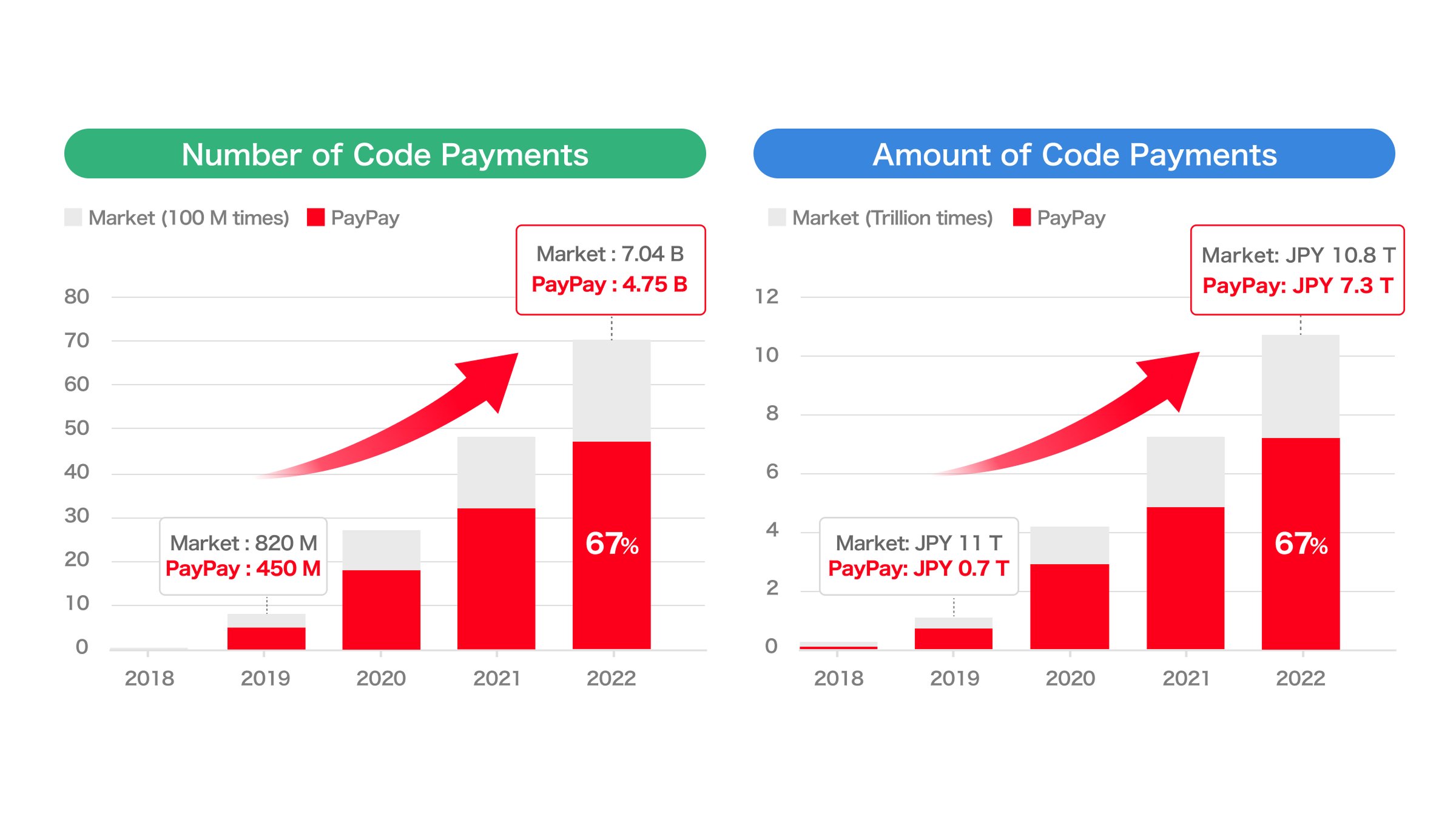
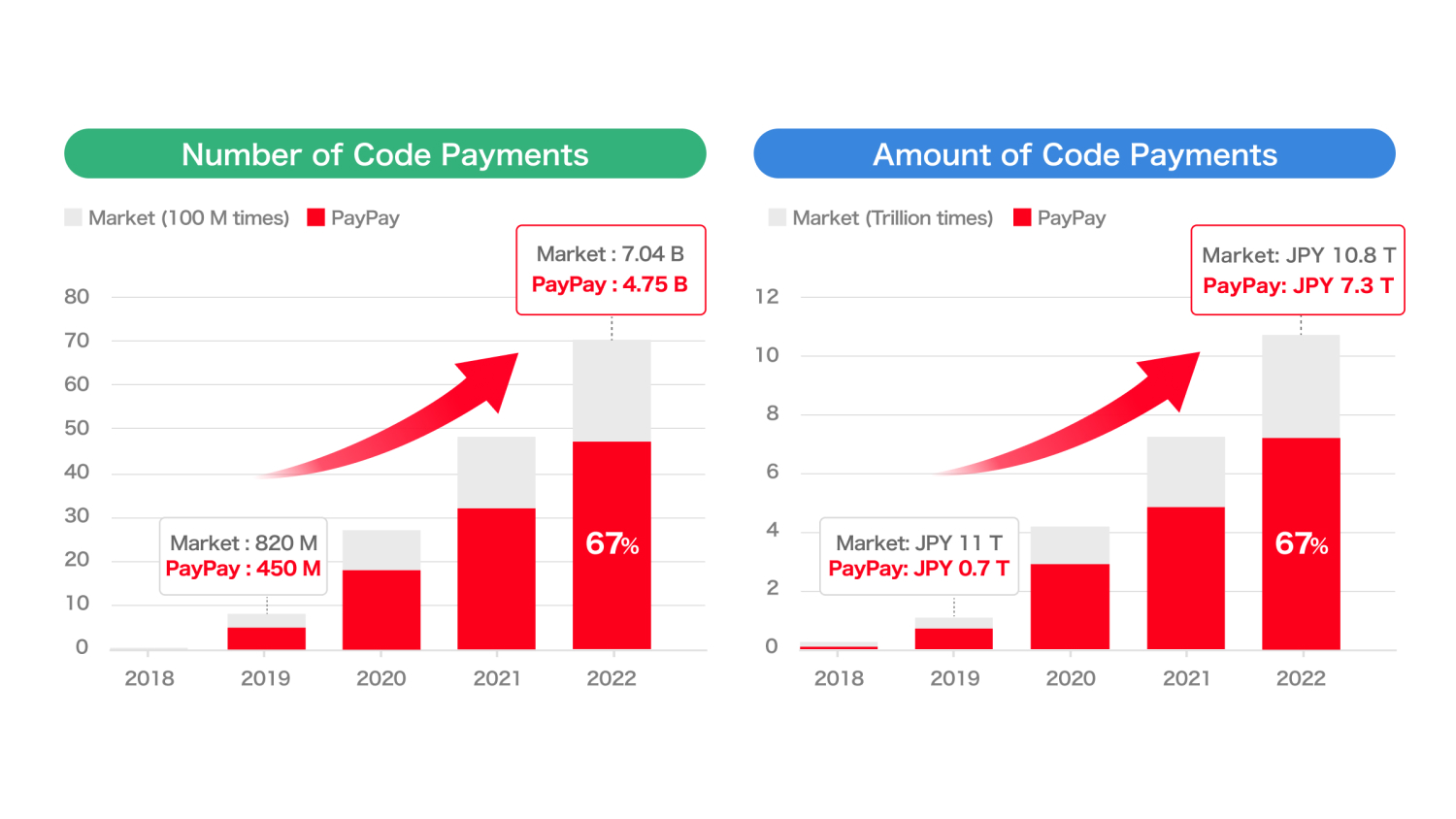
*6. The share for PayPay was calculated by PayPay based on the data published by PAYMENTS JAPAN (Survey of Domestic Code Payment Usage Trends (published on June 22, 2020) ) .
*7. The share for PayPay was calculated by PayPay based on the data published by PAYMENTS JAPAN (Revised on July 7, 2023, Survey of Domestic Code Payment Usage Trends (published on March 3, 2023) .
To become an indispensable part of everyday life, PayPay will continue providing an easy-to-use and convenient experience to all users as it maintains its stride in pursuing a world where “Anytime, Anywhere with PayPay” is a reality. Further, to celebrate the fifth anniversary of “PayPay,” users will be offered commemorative contents that can be enjoyed in the app and an in-app anniversary card Theme. A special web page introducing the fifth anniversary measures and recent initiatives is also available at the following URL.
PayPay’s Special 5th Anniversary Web Page: https://paypay.ne.jp/promo/5th-anniversary/
<PayPay’s Five-Year History>
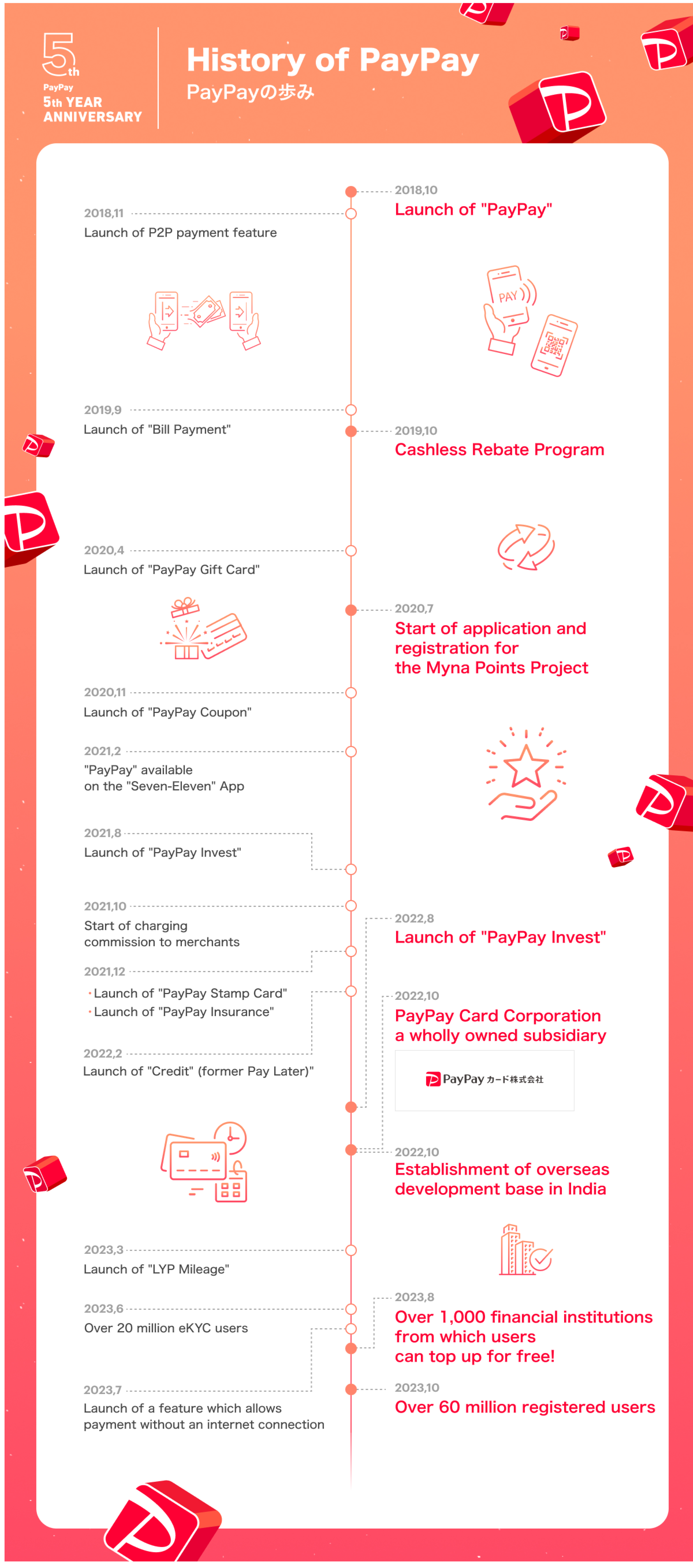
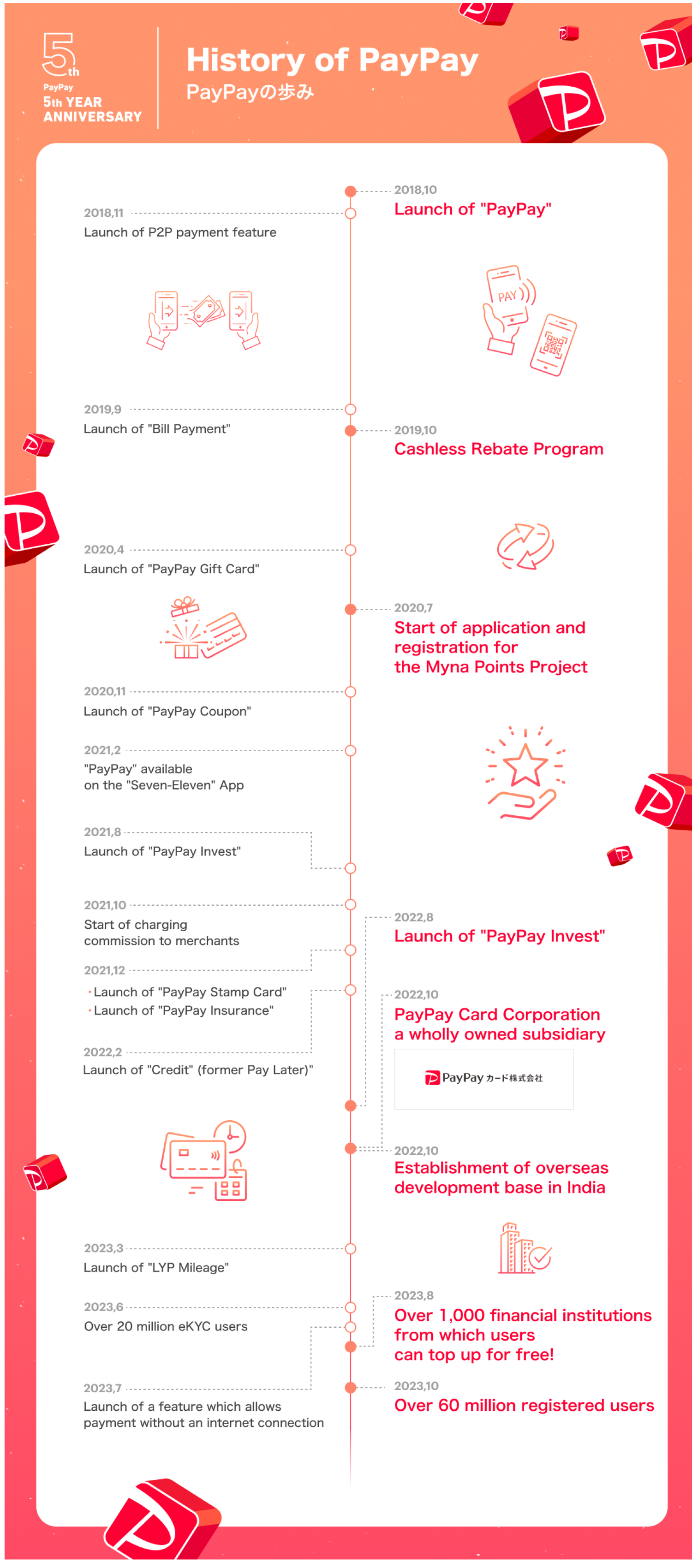
PayPay is registered as follows:
・Prepaid Payment Instruments (third party type) Issuer (Registration number: Director-General of the Kanto Finance Bureau, No. 00710 / Registration date: October 5, 2018)
・Business Operator that Concludes Contracts on the Handling of Credit Card Numbers, etc. (Registration number: Kanto (K) No. 106 / Registration date: July 1, 2019)
・Telecommunications Carrier (Filing number: A-02-17943 / Date filed: July 2, 2019)
・Fund Transfer Operator (Registration number: Director-General of the Kanto Finance Bureau, No. 00068 / Registration date: September 25, 2019)
・Notified Person Entrusted with Intermediation (Filing number: C1907980 / Date filed: December 18, 2019)
・Bank Agency Services (License: Director-General of the Kanto Finance Bureau, No. 396 / Registration date: November 26, 2020)
・Financial Instruments Intermediary Services (Registration number: Kanto Finance Bureau Director (Kinchu) No. 942 / Registration date: June 25, 2021)
・Electronic Payment Agency Services (License: Director-General of the Kanto Finance Bureau, No. 109 / Registration date: February 14, 2023)
・Japan Payment Service Association (https://www.s-kessai.jp/, Date of admission: September 12, 2018)
・Japan Consumer Credit Association (https://www.j-credit.or.jp/, Date of admission: July 1, 2019)
* “PayPay” provides 4 types of PayPay balance: PayPay Money, PayPay Money Lite, PayPay Points, and Gift Vouchers.
PayPay Money can be used to pay for partner services and merchants if it is within the amount deposited into the PayPay account opened after completing an identity verification process. It can also be used for sending and receiving money between PayPay users free of charge. PayPay Money can also be cashed out to a designated bank account (no withdrawal fee if using PayPay Bank). The legal nature of this is an electromagnetic record which can be used to pay for goods and services, can be remitted or cashed out, and is issued by PayPay who is a Fund Transfer Operator registered under Article 37 of the Payment Services Act. Based on the provisions of Article 43 of the Payment Services Act, PayPay protects the debt it owes to its users in by depositing assets equivalent to or higher than the debt amount. PayPay Money Lite is an electronic money issued by PayPay, which can be purchased and used to pay for services and merchants. PayPay users can transfer and receive PayPay Money Lite free of charge. The legal nature of this is a prepaid payment instrument issued by PayPay (Article 3, Paragraph 1 of the Payment Services Act). Based on the provisions of Article 14 of the Payment Services Act, PayPay preserves the relevant assets for the purpose of protecting the owners of the prepaid payment instrument by providing a security deposit for issuance to the Legal Affairs Bureau in an amount that is half or more of the unused balance of prepaid instrument methods as of March 31 and September 30. In addition, PayPay Points, which are granted through campaigns and promotions when using PayPay, can be used for partner services and in transactions at merchants in addition to PayPay Money and PayPay Money Lite. However, PayPay Bonus and PayPay Bonus Lite cannot be sent or transferred between PayPay users or be cashed out. PayPay Gift Voucher is a type of electronic money issued by PayPay, which can be used to make payments for affiliated services and merchants designated by the PayPay Gift Voucher. However, it cannot be transferred to other users or cashed out. PayPay Gift Vouchers have an expiration date, after which it will no longer be valid. The deadline for Gift Vouchers can be confirmed in the details or specifications of the measure or promotion campaigns for which they are issued.
PayPay also strives to create a safe and secure environment for users. If an unexpected payment is made by a third party using a PayPay account, or if a request to settle a payment suddenly arrives from PayPay to a user that does not have a PayPay account, there is a scheme that ensures compensation for the damages suffered (the difference will be provided as compensation if compensation is also provided by a third party), given that the prescribed conditions are met. Please see applying for compensation for details.
*Company names, trade names, and products/services in this press release are registered trademarks or trademarks of their respective companies.





